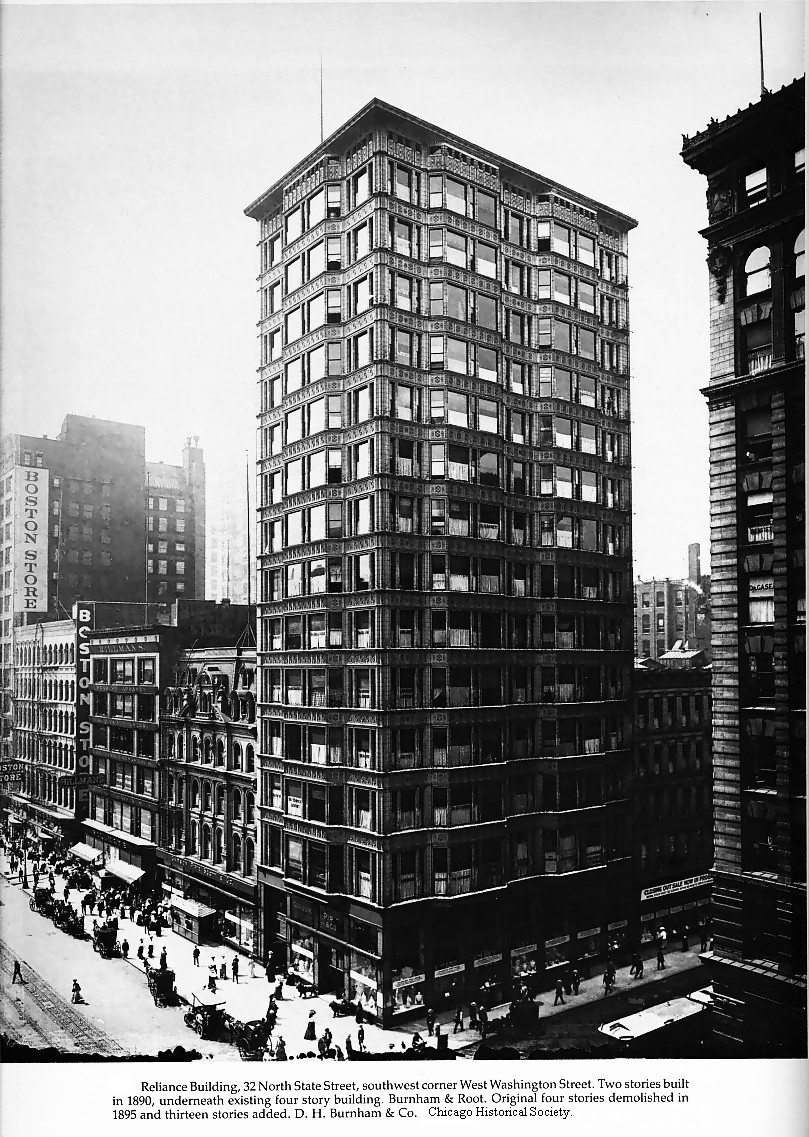The Tall Office Building Artistically Considered (excerpt)
All things in nature have a shape, that is to say, a form, an outward semblance, that tells us what they are, that distinguishes them from ourselves and from each other.
Unfailing in nature these shapes express the inner life, the native quality of the animal, tree, bird, fish, that they present to us; they are so characteristic, so recognizable, that we say, simply, it is “natural” it should be so. Yet the moment we peer beneath this surface of things, the moment we look through the tranquil reflection of ourselves and the clouds above us, down into the clear, fluent, unfathomable depth of nature, how startling is the silence of it, how amazing the flow of life, how absorbing the mystery. Unceasingly the essence of things is taking shape in the matter of things, and this unspeakable process we call birth and growth. Awhile the spirit and the matter fade away together, and it is this that we call decadence, death. These two happenings seem jointed and interdependent, blended into one like a bubble and its iridescence, and they seem borne along upon a slowly moving air. This air is wonderful past all understanding.
Yet to the steadfast eye of one standing upon the shore of things, looking chiefly and most lovingly upon that side on which the sun shines and that we feel joyously to be life, the heart is ever gladdened by the beauty, the exquisite spontaneity, with which life seeks and takes on its forms in an accord perfectly responsive to its needs. It seems ever as though the life and the form were absolutely one and inseparable so adequate is the sense of fulfillment.
Whether it be the sweeping eagle in his flight or the open apple blossom the toiling work horse, the blithe swan, the branching oak, the winding stream at its base, the drifting clouds, over all the coursing sun, form ever follows function, and this is the law. Where function does not change form does not change. The granite rocks, the ever brooding hills, remain for ages; the lightning lives, comes into shape, and dies in a twinkling.
It is the pervading law of all things organic and inorganic, of all things physical and metaphysical, of all things human and all things superhuman, of all true manifestations of the head, of the heart, of the soul, that the life is recognizable in its expression, that form ever follows function. This is the law.
Shall we, then, daily violate this law in our art? Are we so decadent, so imbecile, so utterly weak of eyesight, that we cannot perceive this truth so simple, so very simple? Is it indeed a truth so transparent that we see through it but do not see it? Is it really then, a very marvelous thing, or is it rather so commonplace, so everyday, so near a thing to us, that we cannot perceive that the shape, form, outward expression, design or whatever we may choose, of the tall office building should in the very nature of things follow the functions of the building, and that where the function does not change, the form is not to change?
Does this not readily, clearly, and conclusively show that the lower one or two stories will take on a special character suited to the special needs, that the tiers of typical offices, having the same unchanging function, shall continue in the same unchanging form, and that as to the attic, specific and conclusive as it is in its very nature, its function shall equally be so in force, in significance, in continuity, in conclusiveness of outward expression? From this results, naturally, spontaneously, unwittingly, a three part division, not form any theory, symbol, or fancied logic.
reprinted in Inland Architect and News Record 27 (May 1896), pp. 32-34; Western Architect 31 (January 1922), pp. 3-11; published as “Form and Function Artistically Considered” The Craftsman 8 (July 1905), pp. 453-58.

